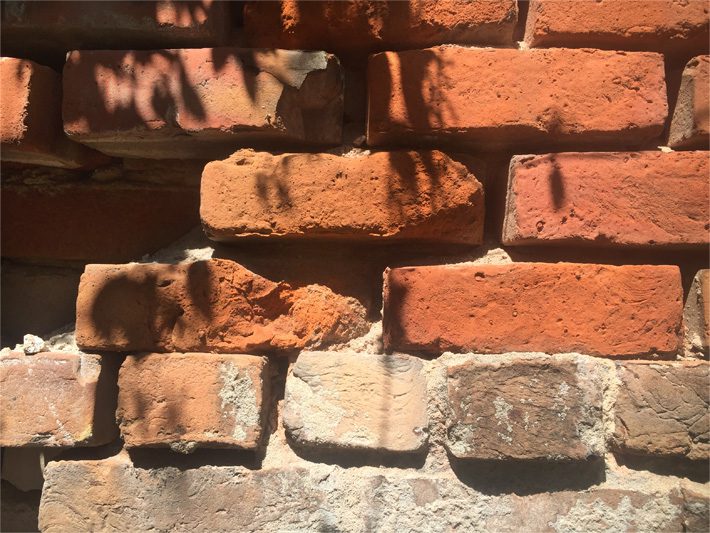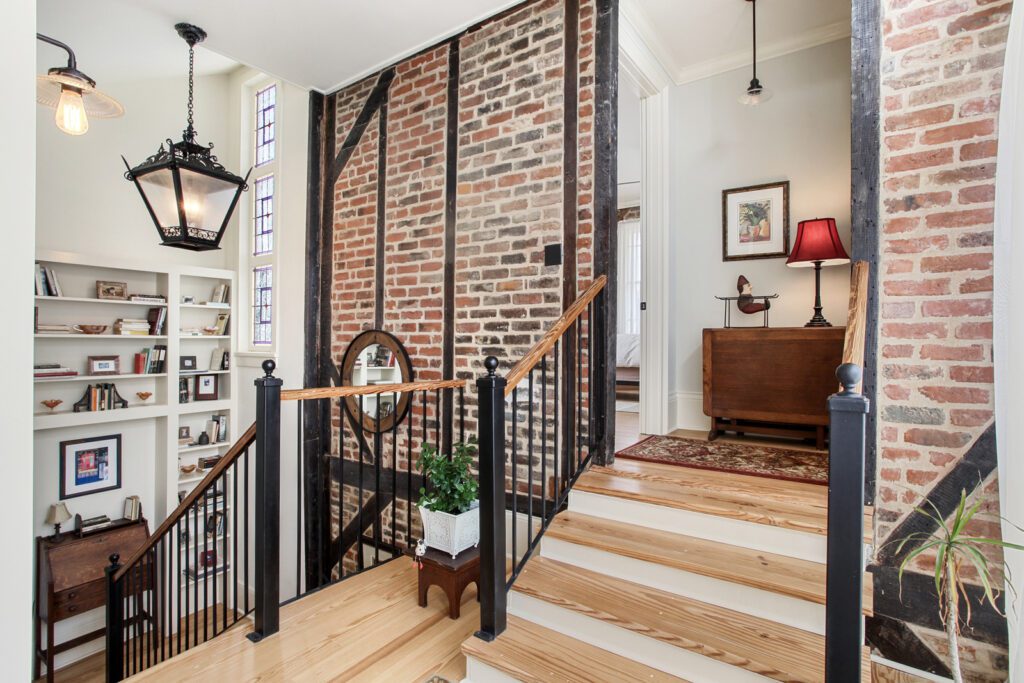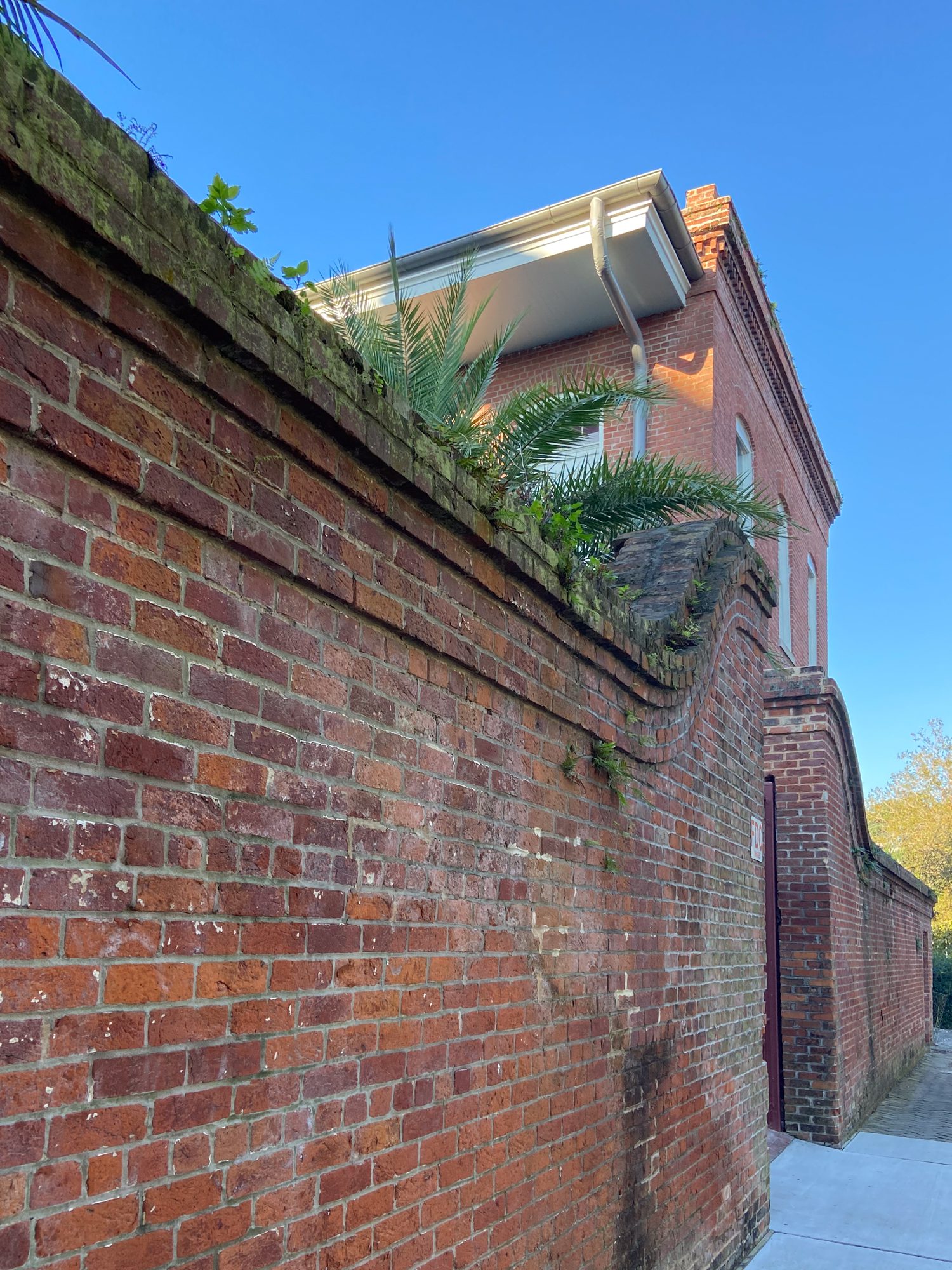Walking through neighborhoods like the French Quarter, Marigny, or the Garden District, you’ll likely spot weathered bricks peeking through stucco walls or forming the base of historic homes centuries old. These handmade New Orleans bricks—common in homes built before the 1920s—are more than just beautiful; they’re foundational to our architectural history.
Whether you’re restoring an exposed wall or repairing old foundation piers, understanding these bricks can help you make the right decisions for your historic home. Here’s what makes them unique—and why they’re worth preserving.
A Brick with a Story: Locally Made and Historically Significant
Historic New Orleans brick was commonly made in and around New Orleans until the early 20th century. Using clay pulled straight from the Mississippi River, these bricks were shaped by hand and fired in wood-burning kilns. Because they were fired at low temperatures and made from natural materials, these bricks have an irregular texture and a distinct soft, chalky red tone that sets them apart from modern counterparts.
Colors can range from a chalky salmon, to deeper red or orange tones, often with streaks or irregular color patches. The lack of uniformity is part of what gives them their charm—but also their fragility. The porous quality that adds so much character also makes it vulnerable to moisture, especially in our humid climate.
Where You’ll Find It: Common Uses in New Orleans Homes
Historically, this soft red brick was used throughout the framework of buildings—especially before the widespread use of wood framing. You’ll find it in foundations, chimneys, piers, and even used as infill between structural timbers or as veneer.
It’s not uncommon to see exposed brick along sidewalls and rear elevations, especially on Creole cottages. But keep in mind: often these bricks were never meant to be exposed. Originally covered in a protective finish such as stucco, limewash, or paint, these surface treatments helped shield the porous brick from moisture. When these finishes wear away or are removed, the unprotected bricks begin to deteriorate faster.

Common Brick Problems in New Orleans
Due to their porous nature, moisture is the number one threat to historic bricks. Here are a few common issues you may encounter with historic brick:
- Spalling or crumbling due to water intrusion
- Efflorescence (a white, powdery residue) caused by moisture drawing lime or salts out of the mortar through a wicking effect
- Failed mortar joints from age or improper repairs
- Mismatched patching using modern materials like Portland cement
Unfortunately, well-meaning but misguided repairs often cause more harm than good. For example, Portland cement is too hard for soft red brick. When historic bricks expand and contract with changes in temperature and moisture, rigid cement doesn’t flex—it causes stress that can lead to cracking and spalling. Portland cement is what you’ll typically find in bags at the hardware store, but it’s not suitable for historic masonry.
How to Care for Historic Brick
Caring for historic brick may seem simple at first glance, but the New Orleans’ climate—with its high humidity, frequent rain, and occasional freezes—can accelerate deterioration. Historic brick in New Orleans takes care and attention. Here are a few best practices:
- Inspect regularly for signs of damage like crumbling mortar, surface flaking, moss or mold growth, or moisture intrusion—especially at ground level and around windows.
- Use lime-based mortar when repointing. Unlike Portland cement, lime mortar is softer and more flexible, allowing the wall to “breathe” and accommodate expansion without breaking the brick.
- Avoid harsh cleaning methods. Skip pressure washers and abrasive scrubbing. Instead, use gentle cleaning techniques like water, mild soap, and natural bristle brushes.
- Maintain original finishes like limewash or stucco. These aren’t just decorative—they protect the brick from the elements.
- Mind Your Landscaping by keeping plants, sprinkler heads, and soil away from brick surfaces. Poor drainage or plant roots can trap moisture and accelerate damage.
If your home is in a historic district, you may be required to use a specific mix. The Vieux Carré Commission (VCC) and Historic District Landmarks Commission (HDLC) recommend a lime-rich mortar for 18th and 19th century masonry:
VCC-Approved Mortar Mix
- 1 Part (maximum) Portland cement
- 3 Parts Lime
- 9 Parts Sand
- Enough potable water to form a workable mix
In some cases, bricks may be too deteriorated to save. If that’s the case, replacements should match the size, color, and texture of the originals as closely as possible. Salvaged bricks are often the best option.

Work with Professionals—and Know the Rules
If your home is in a historic district, you may need approval from the Historic District Landmarks Commission (HDLC) or the Vieux Carré Commission (VCC) before performing masonry work. This ensures any repairs respect the character of your building and neighborhood.
Even outside of designated districts, it’s wise to work with a preservation-focused architect. They can help you assess damage, select appropriate materials, and avoid costly mistakes.
Why It Matters: Preserving the Character of New Orleans Homes
Your historic brick tells the story of your historic home. It isn’t just a building material—it’s a piece of New Orleans legacy. Its local origins, hand-crafted nature, and lasting presence are all part of what makes our architecture so special.
Whether you’re restoring a camelback, renovating a Creole cottage, or stabilizing foundation piers, protecting your original brickwork honors the craftsmanship of the past—and helps your home stand strong into the future.

Additional Resources for Brick Restoration
- Learn more from the Vieux Carré Commission Masonry & Stucco Guidelines, which cover best practices for preserving historic New Orleans brick.
- Read the National Park Service’s Preservation Brief 2 on repointing mortar joints in historic buildings.
- Refer to the Secretary of the Interior’s Standards for Rehabilitation for federal guidance on masonry work.





